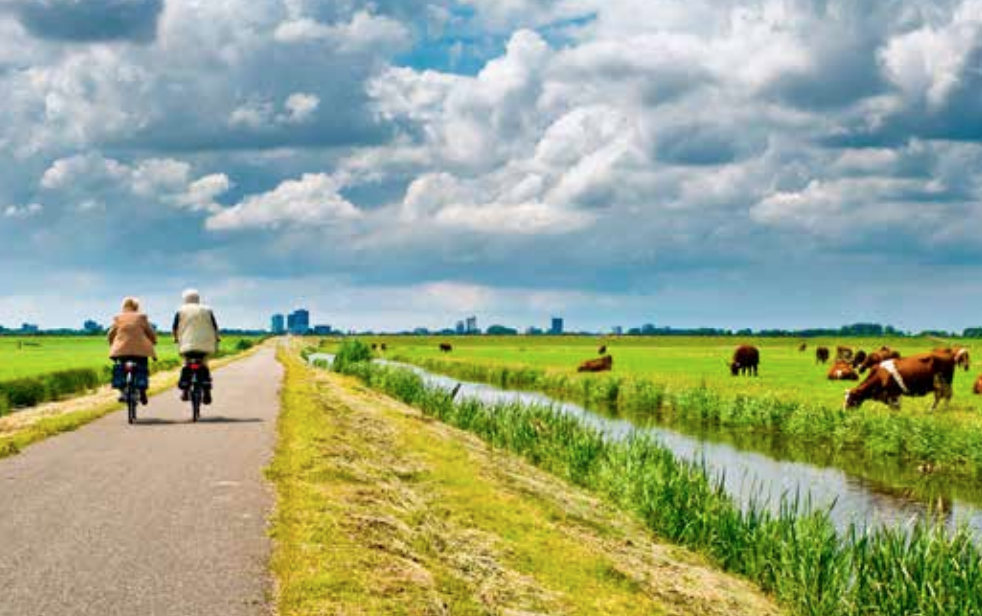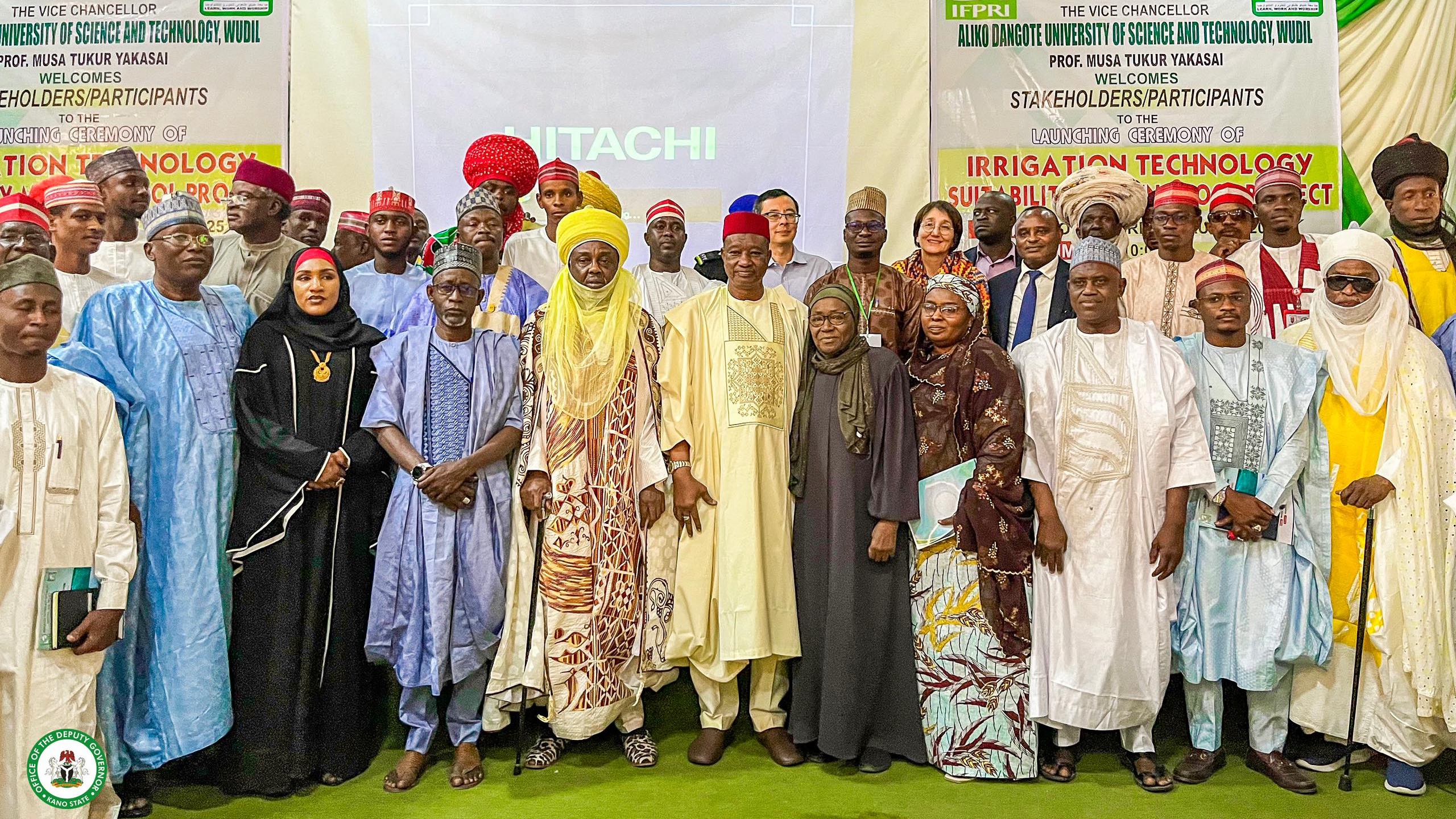One in a series of guest blog posts from leading voices in global development on achieving long-term sustainability and growth while ending hunger, poverty, and malnutrition.
The future of food production is an urgent issue. Imagine that our ecosystems deteriorate to the point where vital crops will not grow anymore. How will we then feed ourselves? That was the dramatic theme of Interstellar—the 2014 science fiction movie in which humans have put so much strain on the earth that our planet has become unlivable. The main characters in the movie are trying to find a planet that could be colonized by people, a “Planet B.” This idea might be attractive to some. But it is, of course, not a realistic solution to the problems we are facing.
Carola Schouten
What we need to do is develop a sustainable form of food production on this planet, where currently soils are being depleted, biodiversity is declining at a rapid rate, clean drinking water is growing scarce, and more than 820 million people don’t have enough to eat.
My country, the Netherlands, is embracing this challenge: The Netherlands is 237 times smaller than the United States, with a population size of 17 million. This means we are among the most densely populated countries in the world. At the same time, we’re the second largest agricultural exporter in the world, after the U.S. As National Geographic aptly wrote in 2017: “This tiny country feeds the world.” The efficiency and innovation of the Dutch agriculture sector is often looked at with amazement.
However, our agriculture sector also faces major challenges related to phosphates, fine particulates and water quality. At present, excessive nitrogen deposition in our natural areas is causing big problems for the Netherlands. And our intensive food production is among the major sources of this nitrogen.
The drawbacks of farming aren’t, however, unique to the Netherlands. Around the world, modern farming methods are impacting nature, people’s health, and food production.
The Netherlands proposes to break this downward spiral by moving towards circular agriculture—also known as closed-loop agriculture, a method of farming with nature, rather than against it. To illustrate this, let me refer to another movie: The Biggest Little Farm. The movie is a story of two film industry professionals who leave Santa Monica to start a new life in the country. With blood, sweat and tears they transform a parched property into a flourishing farm; they grow crops, keep ducks and even a pig, and manage to create a thriving, self-regulating ecosystem. The documentary shows us what’s possible by farming in harmony with natural cycles. It shows us the enormous resilience and self-healing potential of nature. The film maker sees the soil as “nine billion organisms churning away at decaying life forms … alchemizing death to life.” And that is the principle of circular agriculture.
Much like the documentary shows us, circular agriculture starts at the bottom, with restoring soil fertility. Healthy soil is essential for plants. It acts as a buffer during extreme weather. And it limits nitrogen losses to air and water. Circular agriculture aims to minimize inputs of concentrate feed and chemical fertilizer as well as outputs of harmful substances and waste. Residual products from one chain are feedstocks for another. We try to close the loop as locally as possible—within a company, at the local level, within the Netherlands, or across national borders. The motto is: Do it locally if possible, and regionally or internationally if needed.
That means fewer food miles, and fewer products being shipped around the world.
Circular agriculture is more than a method, it is a mission. And each farmer needs to find the answers that work best for their own business. For example: A crop farmer in the north of the Netherlands is creating ideal conditions to attract beneficial insects to grow potatoes, beets, and wheat to avoid using pesticides. In the west of the Netherlands, there’s a lettuce greenhouse with its own biogas plant. Energy is produced from the company’s own plant waste, such as discarded roots.
The focus of circular agriculture is on minimizing the use of raw materials—not on bulk production at the lowest possible price, which incidentally drives many farmers to desperation. Three additional goals are set to realize the perspective of circular agriculture:
- It will only work if farmers are paid a fair price for their products. Farmers will face issues adopting green ways of working if their bank balance is in the red.
- We need to put a higher value on food. The greater the value of food, the less it will be wasted. Valuing food also means encouraging consumers to buy sustainable products.
- The Netherlands has to stay at the forefront of innovation in production methods internationally.
The Netherlands fully endorses the UN Sustainable Development Goals (SDGs), which shows that global problems are often interlinked. Not only do underdeveloped agriculture sectors produce poor harvests, leading to hunger and unhealthy consumption patterns; they’re also linked to poverty, social instability and flows of migrants seeking a better life. Fortunately, the opposite also applies. Sustainable agriculture can help achieve several SDGs: Reduce hunger, improve peoples’ diets and living conditions, and raise incomes.
The Netherlands wants to help countries and regions achieve and safeguard food security. That does mean countries need to be given the opportunity to bring their low-productive agricultural systems to a higher level. In West Africa I’ve seen local markets swamped by cheap, often inferior, agricultural products, exported there by big food-producing countries like the Netherlands and the U.S. Local farmers don’t stand a chance.
But there is reason to be hopeful as well. For instance, I’m very proud of the Dutchman Simon Groot, founder of East West Seeds, who was awarded the World Food Prize in Oct. 2019 for outstanding achievements over his long career. Simon Groot won his spurs in the innovative Dutch seed sector.
He saw how farmers in Asia struggled to get a harvest from bad seeds contributing to sustained poverty and undernourishment. When he started breeding tropical crops native to the region, colleagues said he was crazy. But gradually, Simon Groot gained the trust of small farmers when they reaped best harvests using his seeds. He transformed the lives of some 20 million small farmers in 60 countries, from Southeast Asia to West Africa. One seed at a time.
Dutch agricultural education, from vocational to university level, has been the engine driving Dutch agricultural innovation, drawing students across the world. This is one way in which we share our knowledge. The Netherlands also supports organizations that provide training and advice to farmers around the world.
Currently, different trials with closed-loop agriculture, involving collaboration between universities and farmers, are taking place in designated areas in my country. They test and refine different methods that combine ecological principles and modern technologies for circular farming. Sometimes, new applications are based on traditional knowledge or farming wisdom from the pre-industrialization and -mechanization days. For instance, sowing arable field margins and strip cropping. Following traditional knowledge doesn’t mean that circular agriculture will take us back to the days of the early pioneers; rather, advanced breeding techniques, robotization and precision farming using satellite data and drones will also play a big role in the farms of the future.
As circular agriculture takes hold in the Netherlands, other countries will notice changes too.
The Netherlands will become less dependent on animal feed from countries in South America, for instance, which will take the pressure off its nature and biodiversity. Worldwide, demand for food may remain unchanged—or even increase—but this demand won’t be met by the Netherlands alone. So, land elsewhere may need to be brought into cultivation. If we can ensure that countries across the globe produce food in the same efficient way, the net impact on biodiversity and the climate will be zero.
Carola Schouten is the Minister of Agriculture, Nature and Food Quality, the Netherlands. Twitter handle: @minlnv.







